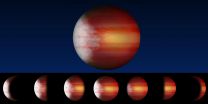(Press-News.org) The act of identifying a perpetrator does not just involve memory and thinking, but also constitutes a moral decision. This is because, by the act of identifying or not identifying someone, the eyewitness runs the risk of either convicting an innocent person or letting a guilty person go free.
In an article published recently in Archives of Scientific Psychology, Spring et al. (2015) discuss two studies in which children and adolescents of different ages watched a film involving a potential wrong-doing: throwing a lit birthday cake into a wastebasket, either with or without the intention of starting a fire and resulting in either no fire or a serious fire. The filmed act is identical in all conditions; what is varied is the way the filmed act is 'framed' or described by a voice-over.
In study 1, 138 children, ages 7 to 18, were shown a film that was framed as either (a) an intended fire that fizzled out resulting in no fire damage or (b) an unintended or innocent act, but one that caused a fire which burned the restaurant down. Each child was shown individual photos of the 'perpetrator,' others in the film and someone not in the film one at a time and asked whether that person was the one who committed the act and how confident they were on a four-point scale. Analysis using Signal Detection reveals an interaction of age and condition on decisional bias. The framing of the act had no effect on the 7-9 year olds, but did have an effect on decisional bias for the other age groups. Decisional bias was more lax (indicating more false alarms) in the intended condition for 10-12 and 13-15 year olds but was more stringent (with fewer false alarms) for the 16-18 year olds. This pattern of age and condition differs from the pattern of explicit judgments ('how bad the act was, how much punishment it deserved, and how bad it is to commit a false alarm or a miss').
Study 2 was conducted to confirm and expand the findings for the 10-12 year olds. Forty-two children, ages 10-12, viewed the same film, in which the act was framed as unintended but resulting either in (a) major or (b) minor fire damage. Approximately half of the children were randomly assigned to condition (a) and half to (b). There were lower bias scores (more false alarms) in the major damage conditions than the minor damage for the 10-12 year-olds when intentions were bad.
Thus, from both studies, the authors conclude that decisional bias is more lenient (resulting in more false alarms) for 10-12 year olds when either bad intent or bad damage is highlighted. In both studies, after performing the task, the participants were asked in an age-appropriate way, which kind of error, a false positive or false negative was worse and why. It became apparent why the framing instructions had no effect on the 7-9 year olds; in all the studies we have conducted, it was clear that 7-9 year olds do not think of identifying a perpetrator as a moral decision.
What conclusions can be drawn from the findings? First, most generally, the decisional criteria implicitly used by children or adolescents when identifying a perpetrator are substantially influenced by the moral nature of the act interacting with the age (developmental status) of the eyewitness. The research further suggests that:
a moral development framework is useful for examining developmental changes in eyewitness identification, as measured by signal detection analysis;
children's understanding of the task changes with age, as reflected in their implicit decisional strategy and their explicit answers to why false alarms and misses are bad; and,
their implicit, moral evaluation of the act, which changes with age, is evidenced in their performance specifically, the decisional bias, which influences their eyewitness judgments.
Thus, one might even view decisional bias as a kind of implicit measure of moral judgment.
INFORMATION:
Citation:
Spring, T., Saltzstein, H. D., & Vidal, B. (2015). A moral developmental perspective on children's eyewitness identification: Does intent matter? Archives of Scientific Psychology, 3(1), 1-7. http://dx.doi.org/10.1037/arc0000011
A new study published today in the journal Addiction has compiled the best, most up-to-date evidence on addictive disorders globally. It shows that almost 5% of the world's adult population (240 million people) have an alcohol use disorder and more than 20% (1 billion people) smoke tobacco. Getting good data on other drugs such as heroin and cannabis is much more difficult but for comparison the number of people injecting drugs is estimated at around 15 million worldwide.
The "Global Statistics on Addictive Behaviours: 2014 Status Report" goes further in showing that ...
BUFFALO, N.Y. -- Tinnitus is the most common service-related disability for veterans returning from Iraq and Afghanistan. Often described as a ringing in the ears, more than 1.5 million former service members, one out of every two combat veterans, report having this sometimes debilitating condition, resulting in more than $2 billion dollars in annual disability payments by the U.S. Department of Veterans Affairs.
Tinnitus is largely a mystery, a phantom sound heard in the absence of actual sound. Tinnitus patients "hear" ringing, buzzing or hissing in their ears much like ...
Transgenic Huntington's disease monkeys show similarity to humans with Huntington's in their progressive neurodegeneration and decline of motor control, scientists from Yerkes National Primate Research Center, Emory University, report.
These findings are promising for developing a preclinical, large animal model of Huntington's disease for assessing new therapeutics, which could ultimately provide better treatment options, including altering the course of the disease.
In this first multiyear study on a transgenic nonhuman primate model for Huntington's, lead author ...
DURHAM, N.C. -- Lemur girls behave more like the guys, thanks to a little testosterone, according to a new study.
Males rule in most of the animal world. But when it comes to conventional gender roles, lemurs -- distant primate cousins of ours -- buck the trend.
It's not uncommon for lady lemurs to bite their mates, snatch a piece of fruit from their hands, whack them in the head or shove them out of prime sleeping spots. Females mark their territories with distinctive scents just as often as the males do. Males often don't take their share of a meal until the females ...
BROOKLYN, New York -- Researchers have demonstrated a new metal matrix composite that is so light that it can float on water. A boat made of such lightweight composites will not sink despite damage to its structure. The new material also promises to improve automotive fuel economy because it combines light weight with heat resistance.
Although syntactic foams have been around for many years, this is the first development of a lightweight metal matrix syntactic foam. It is the work of a team of researchers from Deep Springs Technology (DST) and the New York University ...
The sun was just beginning to rise as two men headed down to the beach to board a small inflatable boat. Searching for abalone was on their agenda for the day. Their excitement was difficult to contain as they surveyed the coastline looking for sand ridges -- an important clue that abalone may be near. The two men, David Witting and Bill Hagey, share a passion for finding the now rare white abalone and understanding the movement and feeding behaviors of all abalone species.
David Witting, a NOAA Fisheries biologist, has been engaged in efforts to restore abalone populations ...
Many of us are familiar with electrolytic splitting of water from their school days: if you hold two electrodes into an aqueous electrolyte and apply a sufficient voltage, gas bubbles of hydrogen and oxygen are formed. If this voltage is generated by sunlight in a solar cell, then you could store solar energy by generating hydrogen gas.This is because hydrogen is a versatile medium of storing and using "chemical energy". Research teams all over the world are therefore working hard to develop compact, robust, and cost-effective systems that can accomplish this challenge. ...
For the first time, a researcher at the University of Waterloo has theoretically demonstrated that it is possible to detect a single nuclear spin at room temperature, which could pave the way for new approaches to medical diagnostics.
Published in the journal Nature nanotechnology this week, Amir Yacoby from the University of Waterloo, along with colleagues from University of Basel and RWTH Aachen University, propose a theoretical scheme that could lead to enhanced Nuclear Magnetic Resonance (NMR) imaging of biological materials in the near future by using weak magnetic ...
TORONTO, ON -- "Cloudy for the morning, turning to clear with scorching heat in the afternoon."
While this might describe a typical late-summer day in many places on Earth, it may also apply to planets outside our solar system, according to a new study by an international team of astrophysicists from the University of Toronto, York University and Queen's University Belfast.
Using sensitive observations from the Kepler space telescope, the researchers have uncovered evidence of daily weather cycles on six extra-solar planets seen to exhibit different phases. Such phase ...
In a new study published in the Protein & Cell, Chen-Yu Zhang's group at Nanjing University reports that small non-coding RNAs in maternal food can transfer through placenta to regulate fetal gene expression.
MicroRNAs (miRNA) are a class of noncoding RNAs with lengths of approximately 22 nucleotides that bind to target messenger RNAs to inhibit protein translation. In previous studies, the same group has found that plant miRNAs can enter into the host blood and tissues via the route of food-intake. The food-derived exogenous miRNAs are absorbed, packaged into microvesical ...



